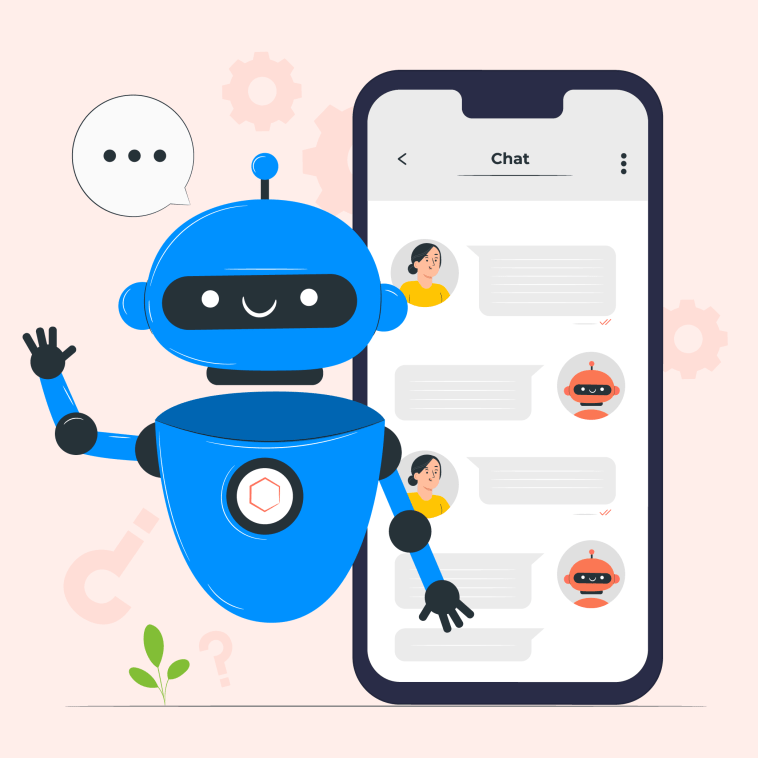Introduction
The fascinating world of Artificial Intelligence (AI) has given rise to numerous groundbreaking applications, and chatbots are among the most compelling and widely used AI-powered tools today.
These intelligent conversational agents can simulate human-like interactions and have found applications in various domains, from customer support to personal assistants and beyond.
If you’ve ever been curious about building your AI chatbot, you’re in for an exciting journey!
In this guide, we’ll explore how to create an AI chatbot using the versatile programming language, Python. Python’s simplicity, extensive libraries, and strong AI support make it an excellent choice for developing sophisticated chatbots.
Throughout this tutorial, we’ll walk you through the step-by-step process, starting with the fundamental concepts and gradually building a fully functional AI chatbot.
We’ll cover the essential components that make up an AI chatbot, such as natural language processing (NLP), machine learning techniques, and the integration of conversational logic.
You’ll learn how to harness the power of popular Python libraries, such as NLTK (Natural Language Toolkit), TensorFlow, and PyTorch, to enhance the chatbot’s understanding and responsiveness.
How Do I Create an AI Chatbot In Python?
Artificial Intelligence (AI) has revolutionized the way we interact with technology, and chatbots are a prime example of its capabilities.
These intelligent conversational agents have become ubiquitous, serving as virtual assistants, customer support, and even companions in various applications.
Building an AI chatbot may seem daunting, but fear not! In this comprehensive guide, we will walk you through the process of creating your very own AI chatbot in Python.
So, let’s embark on this exciting journey of crafting an intelligent and interactive chatbot from scratch.
1. Understanding Natural Language Processing (NLP).
The foundation of any chatbot lies in its ability to understand and process human language. Natural Language Processing (NLP) enables the chatbot to comprehend user inputs, extract meaningful information, and formulate relevant responses.
We’ll leverage Python’s powerful NLP libraries, such as NLTK (Natural Language Toolkit), to process text data effectively.
2. Installing the Required Libraries.
Before we dive into building the chatbot, make sure you have Python installed on your system. We’ll also need to install essential libraries like NLTK and other dependencies, using package managers like pip. This will ensure a smooth development process.
3. Data Collection and Preprocessing.
To train our chatbot, we’ll need conversational data. Depending on your use case, you can gather data from various sources or create your dataset. We’ll then preprocess the data, cleaning it and preparing it for training.
4. Building a Chatbot Framework.
Next, we’ll define the architecture of our chatbot. We’ll create functions to process user inputs, generate responses, and handle various conversational scenarios.
The chatbot’s brain will consist of machine learning models trained using the dataset we collected earlier.
5. Implementing NLP Techniques.
This step involves employing NLP techniques to enhance the chatbot’s understanding and responsiveness.
We’ll explore techniques like tokenization, part-of-speech tagging, and sentiment analysis to make the chatbot more contextually aware.
6. Training the Chatbot with Machine Learning.
Machine learning is crucial for improving the chatbot’s performance over time. We’ll use supervised learning algorithms like Support Vector Machines (SVM) or deep learning models like Recurrent Neural Networks (RNNs) to train the chatbot on our dataset.
7. Creating an Interactive Interface.
To allow users to interact with our chatbot seamlessly, we’ll create a user-friendly interface. This interface can be a web application, a desktop application, or even integration with a messaging platform like Telegram or Facebook Messenger.
8. Deploying the Chatbot.
Once our chatbot is trained and the interface is ready, it’s time to deploy it to the world! We’ll explore different hosting options, such as deploying on cloud platforms like Heroku or AWS, to make our chatbot accessible to users.
9. Continuous Improvement and Learning.
A good chatbot should continuously learn from user interactions and improve its responses. We’ll implement mechanisms for the chatbot to learn from new data and user feedback, ensuring it becomes smarter with each conversation.
10. Testing and Refinement.
Testing is crucial to ensure that our chatbot functions as intended and provides accurate and relevant responses.
We’ll thoroughly test the chatbot, gather user feedback, and make refinements as necessary to enhance its performance.
Building an AI chatbot in Python is a rewarding experience that combines NLP, machine learning, and programming skills.
Throughout this journey, remember to be creative and iterate to make your chatbot more engaging and user-friendly.
Conclusion.
With Python’s versatility and a solid understanding of NLP and machine learning, you have all the tools you need to create an impressive AI chatbot.
So, roll up your sleeves and get ready to design an intelligent conversational agent that will captivate users and add value to countless applications. Happy coding!






GIPHY App Key not set. Please check settings